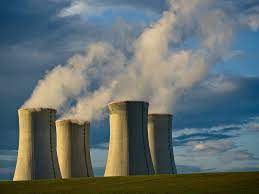Pakistan inaugurated the third unit of the Karachi Nuclear Power Plant (KANUP), commonly known as K-3 on Thursday. As said that the newly constructed unit will add another 1,100 megawatts of energy to the national electricity grid. Pakistan’s crippling energy needs had become a foremost economic challenge for the rulers because it is seriously hurting the national economy and undermining both national security and the economic sovereignty of the state. Today, there is no concept of life without light, from kitchen heating to Industrial production, health centers to agriculture and farming while vehicular traffic, air travel, and sea exploration are not possible without energy.
The state of Pakistan faces a bulk of the issues connected with the energy crisis as the country’s energy import bill has touched $ 27 billion per annum, even though people are unable to get dearly needed high-cost electricity to satisfy their domestic and commercial needs. The administrators face multiple handicaps including the nonavailability of cheaper electricity fuel/ thermal oil, line losses, no payment of electricity bills, and colossal circular debt of the power sector along with an ever-increasing demand-supply gap of the highly essential commodity. Thus, this fiasco has turned into an unsolvable puzzle for the bureaucrats and leaders who failed to manage the problem over the past decades.
Historically, Pakistan’s energy plan got a server setback when the 3600 megawatts proposed Kalabagh hydel power project became prey to political rivalry in the early eighties and no successive governments could start its construction due to political reasons. Thus, Pakistan’s energy grid gradually shifted to costly thermal power, whereas highly controversial purchase contracts with the IPPs along with the capacity payments proved to be the last nail in the coffin of Pakistan’s economy. Over the years, high costs and no electricity had brought about significant damage to the national economy resulting in the closure of thousands of industrial units, exacerbating employment, reducing foreign exports, and paralyzing national growth.
To date, bad governance and poor planning present a meek future for Pakistan’s economy, as Pakistani leaders failed to keep energy production at par vis-a-vis population and economic growth over the past decades. Pakistan could neither use domestic hydel, coal, and wind resources for energy production nor procured a low-cost unrestricted power supply from abroad including the completion of Pak-Iran gas pipelines, CASA-1000, TAPI and other multilateral energy projects in the region.
The recent geopolitical events had changed the dynamics of national sovereignty as economic independence and energy security has become vital for the survival of any nation. Nations across the globe are diversifying their energy resources by rapid conversion over alternative energies including solar, wind, and nuclear energy to compete for future challenges. Pakistan is also actively working to increase solar, wind, hydel, and nuclear power share in its energy grid, and the operationalization of K-3 is an important milestone in this regard. Presently, we are producing costly thermal and LNG-based electricity, that had increased production costs and added a massive financial burden to local industry and domestic users in the country. Therefore, Pakistani strategists need to focus on cheaper and renewable energy resources to boost the country’s export and provide relief to the masses, so the nation moves toward economic self-reliance and industrial growth.







